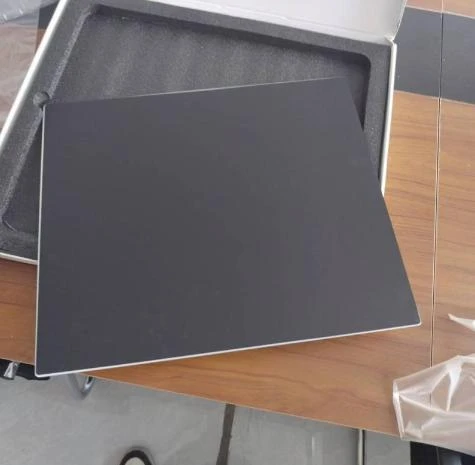Architectural Curtain Walls A Harmonious Blend of Aesthetics and Functionality
In modern architecture, the concept of curtain walls has gained significant traction, offering a unique blend of design flexibility, energy efficiency, and structural integrity. Architectural curtain walls are non-structural cladding systems that hang like a veil from the structural frame of a building. Unlike traditional walls, which take on some of the building's load, curtain walls are designed to resist only their own weight and the effects of wind and seismic activities. This innovation has revolutionized the way architects approach building design, leading to impressive structures that push the boundaries of creativity and functionality.
Design and Aesthetic Appeal
The aesthetic potential of curtain walls is one of their most celebrated features. By using materials such as glass, metal, and even specialized composite materials, architects can create stunning facades that enhance a building's visual appeal. The transparency of glass allows for expansive views and natural light to flood the interior spaces, creating an inviting atmosphere while reducing the need for artificial lighting during the day. The use of various finishes and colors provides designers with the flexibility to produce a wide array of styles, from sleek modern skyscrapers to intricate, artistic designs.
Moreover, the ability to integrate curtain walls with other architectural elements, such as balconies, shading devices, and integrated vegetation systems, offers a unique opportunity to blend the built environment with nature. This approach not only enhances the aesthetic appeal but also promotes sustainability by increasing energy efficiency through natural ventilation and allowing occupants to engage with their surroundings.
Structural Efficiency
From a structural perspective, curtain walls offer numerous advantages. They enable architects to maximize interior space and design flexibility, as the walls do not bear the building's load. This feature allows for larger windows and expansive open spaces, making properties more versatile and enhancing functional usage. Additionally, the lighter weight of curtain wall systems compared to traditional masonry reduces the overall load on the building's foundation, thereby potentially decreasing construction costs.
architectural curtain wall
Furthermore, advancements in engineering and materials science have led to the development of high-performance curtain wall systems that can withstand extreme weather conditions while providing thermal and acoustic insulation. Innovations such as double-skin facades and unitized systems allow for improved energy efficiency, reducing heating and cooling costs and ultimately benefiting both the environment and building occupants.
Energy Efficiency and Sustainability
In an era where sustainability is paramount, curtain walls are making significant strides in energy efficiency. High-performance glass with low-emissivity (low-E) coatings can minimize heat transfer, ensuring that buildings maintain comfortable interior temperatures regardless of external conditions. The integration of smart technologies, such as automated shading systems, allows for optimal control of sunlight and heat gain, further enhancing energy efficiency.
Moreover, many contemporary curtain wall systems are designed with recyclable materials, which aligns with the growing trend toward sustainable building practices. The ability to design curtain walls with renewable resources, combined with energy-efficient features, contributes to achieving green building certifications, such as LEED (Leadership in Energy and Environmental Design).
Conclusion
In conclusion, architectural curtain walls have fundamentally transformed the landscape of modern architecture by merging beauty, functionality, and sustainability. Their ability to facilitate unique designs while promoting energy efficiency makes them an ideal choice for architects and builders seeking to create structures that resonate with contemporary sensibilities. As technology continues to advance, it is likely that curtain wall systems will evolve further, opening new avenues for innovation in architectural design. Ultimately, the impact of curtain walls on the built environment is profound, establishing a lasting legacy of aesthetic refinement and environmental responsibility in the architectural realm.
 Afrikaans
Afrikaans  Albanian
Albanian  Amharic
Amharic  Arabic
Arabic  Armenian
Armenian  Azerbaijani
Azerbaijani  Basque
Basque  Belarusian
Belarusian  Bengali
Bengali  Bosnian
Bosnian  Bulgarian
Bulgarian  Catalan
Catalan  Cebuano
Cebuano  Corsican
Corsican  Croatian
Croatian  Czech
Czech  Danish
Danish  Dutch
Dutch  English
English  Esperanto
Esperanto  Estonian
Estonian  Finnish
Finnish  French
French  Frisian
Frisian  Galician
Galician  Georgian
Georgian  German
German  Greek
Greek  Gujarati
Gujarati  Haitian Creole
Haitian Creole  hausa
hausa  hawaiian
hawaiian  Hebrew
Hebrew  Hindi
Hindi  Miao
Miao  Hungarian
Hungarian  Icelandic
Icelandic  igbo
igbo  Indonesian
Indonesian  irish
irish  Italian
Italian  Japanese
Japanese  Javanese
Javanese  Kannada
Kannada  kazakh
kazakh  Khmer
Khmer  Rwandese
Rwandese  Korean
Korean  Kurdish
Kurdish  Kyrgyz
Kyrgyz  Lao
Lao  Latin
Latin  Latvian
Latvian  Lithuanian
Lithuanian  Luxembourgish
Luxembourgish  Macedonian
Macedonian  Malgashi
Malgashi  Malay
Malay  Malayalam
Malayalam  Maltese
Maltese  Maori
Maori  Marathi
Marathi  Mongolian
Mongolian  Myanmar
Myanmar  Nepali
Nepali  Norwegian
Norwegian  Norwegian
Norwegian  Occitan
Occitan  Pashto
Pashto  Persian
Persian  Polish
Polish  Portuguese
Portuguese  Punjabi
Punjabi  Romanian
Romanian  Russian
Russian  Samoan
Samoan  Scottish Gaelic
Scottish Gaelic  Serbian
Serbian  Sesotho
Sesotho  Shona
Shona  Sindhi
Sindhi  Sinhala
Sinhala  Slovak
Slovak  Slovenian
Slovenian  Somali
Somali  Spanish
Spanish  Sundanese
Sundanese  Swahili
Swahili  Swedish
Swedish  Tagalog
Tagalog  Tajik
Tajik  Tamil
Tamil  Tatar
Tatar  Telugu
Telugu  Thai
Thai  Turkish
Turkish  Turkmen
Turkmen  Ukrainian
Ukrainian  Urdu
Urdu  Uighur
Uighur  Uzbek
Uzbek  Vietnamese
Vietnamese  Welsh
Welsh  Bantu
Bantu  Yiddish
Yiddish  Yoruba
Yoruba  Zulu
Zulu 

